Product Categories
Sometimes you find a great product, but you can’t sell it
First, it is important to review the categories that you can sell right off the start:
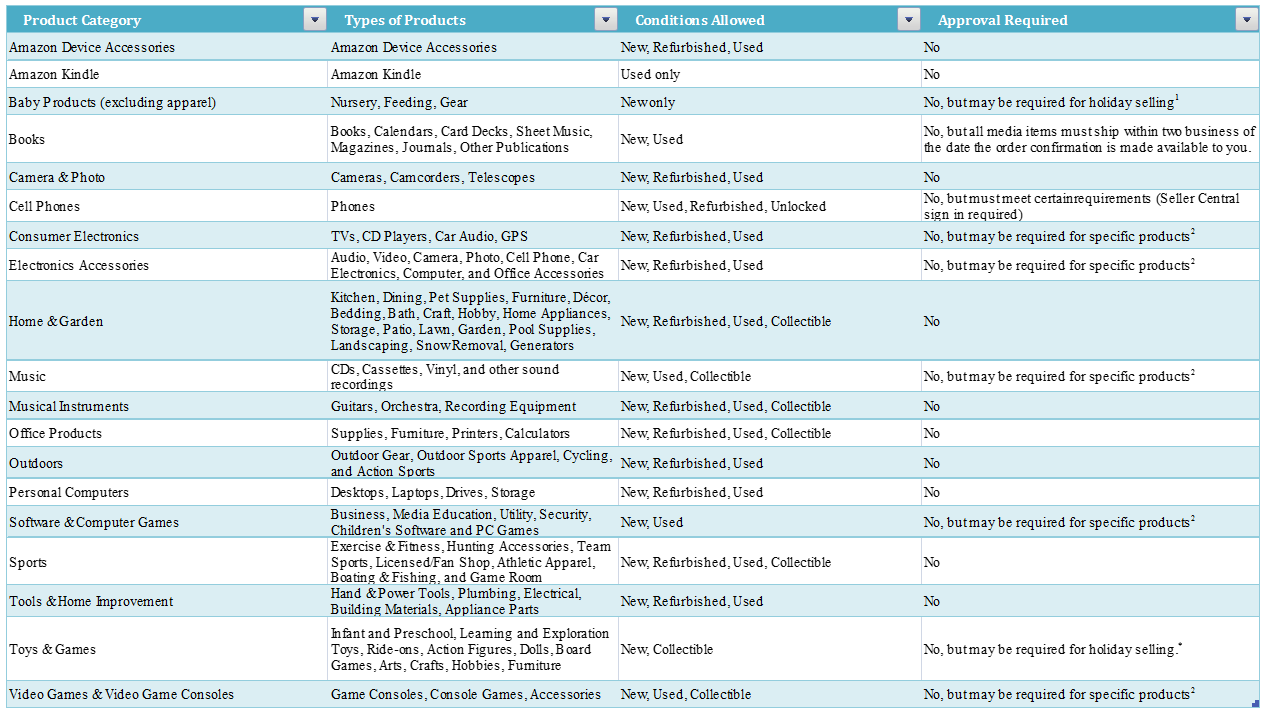
If you want to sell in any of the above categories, then you may not need this post. But there are many lucrative options, and in many cases, better margins, if you sell in categories that require further Amazon Approval. Those categories are below:
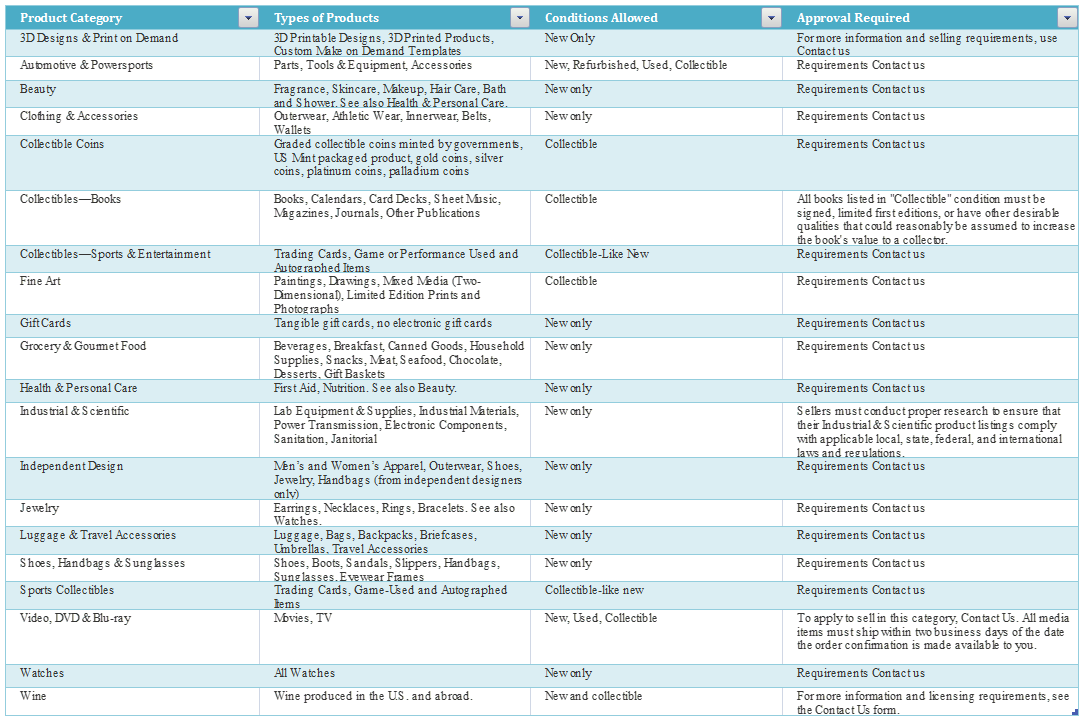
So your first question may be: why does Amazon restrict some categories, rather than others? Amazon has reasonable concerns for this, some may be because of legal or regulatory reasons, and others are to ensure consistency of products. You wouldn’t want to buy a box of Keurig K-Cups, only to find that they are expired, after all, right? Here is Amazon’s answer:
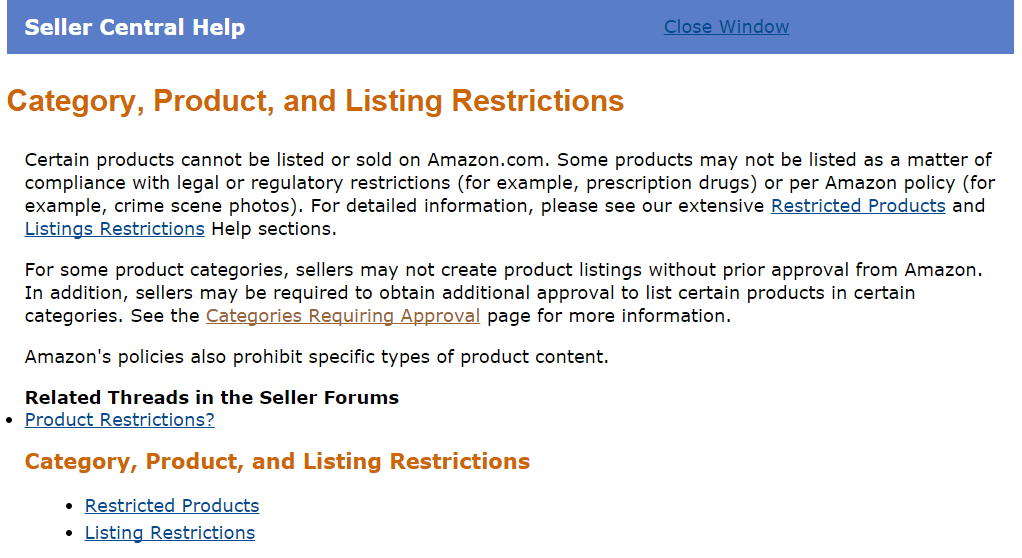
Amazon Seller Center Category, Product, and Listing Restrictions.
Ungating Product Categories
Some product categories are easier to ungate than others. In researching for this post, I found that most of those categories that are still restricted to me, are virtually impossible to get ungated. These are categories like shoes, sunglasses, luggage, etc. Despite being saddened to learn that I won’t be able to maximize the next eBags shopping portal bonus, I’m moving on. But you shouldn’t. There are some great product categories that you can ungate, depending on what you are looking to sell.
Example: Ungating Health and Personal Care
The Health and Personal Care category covers a bunch of stuff, so it makes sense to try to ungate it. It’s also one of the easier categories to ungate.
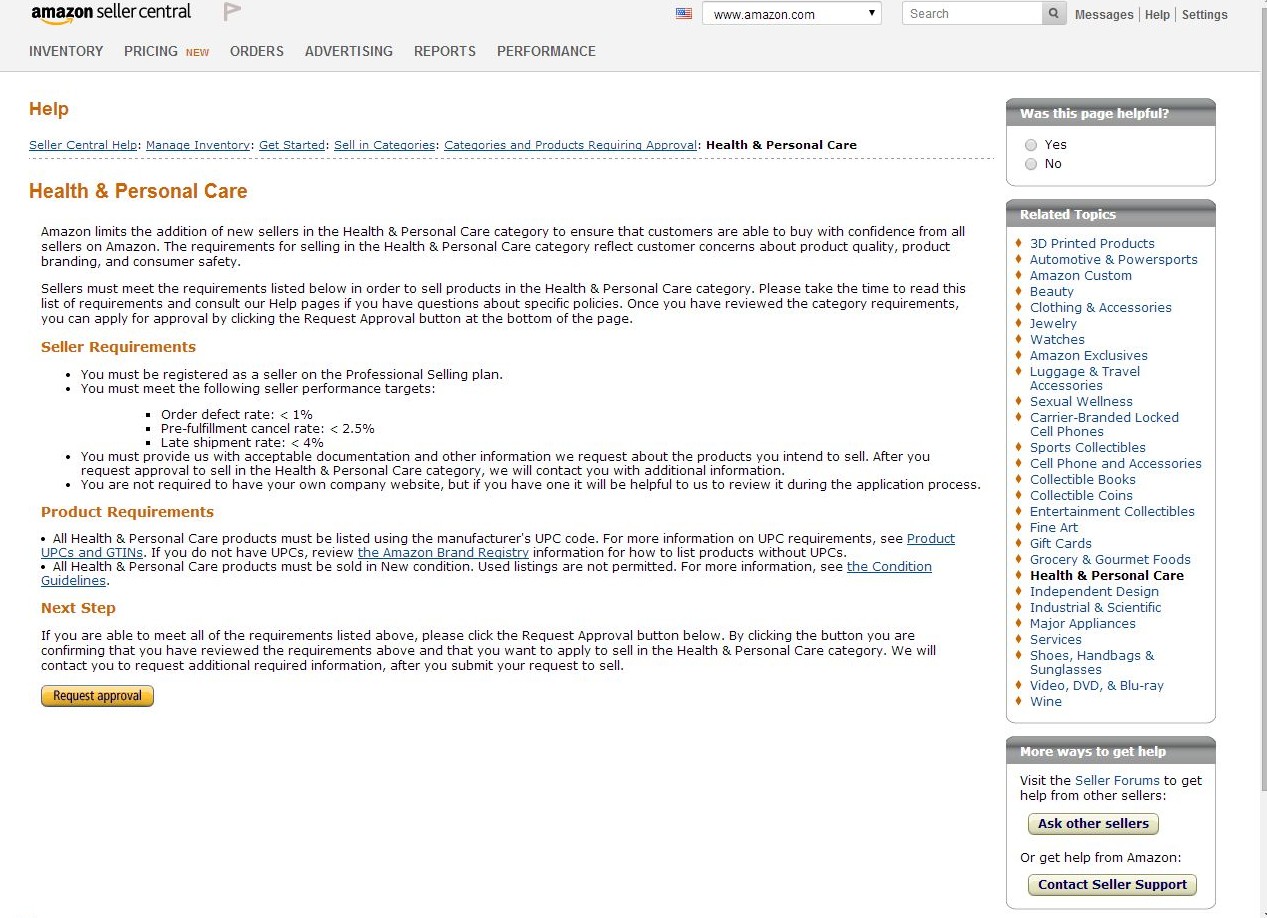
Note that most of those seller performance targets matter, but not as much if you sell via FBA, because you won’t have pre-fulfillment cancellations, nor late shipment rates, since FBA is doing that.
Moving on to the requesting approval stage, which will vary depending on which category you are looking to ungate:
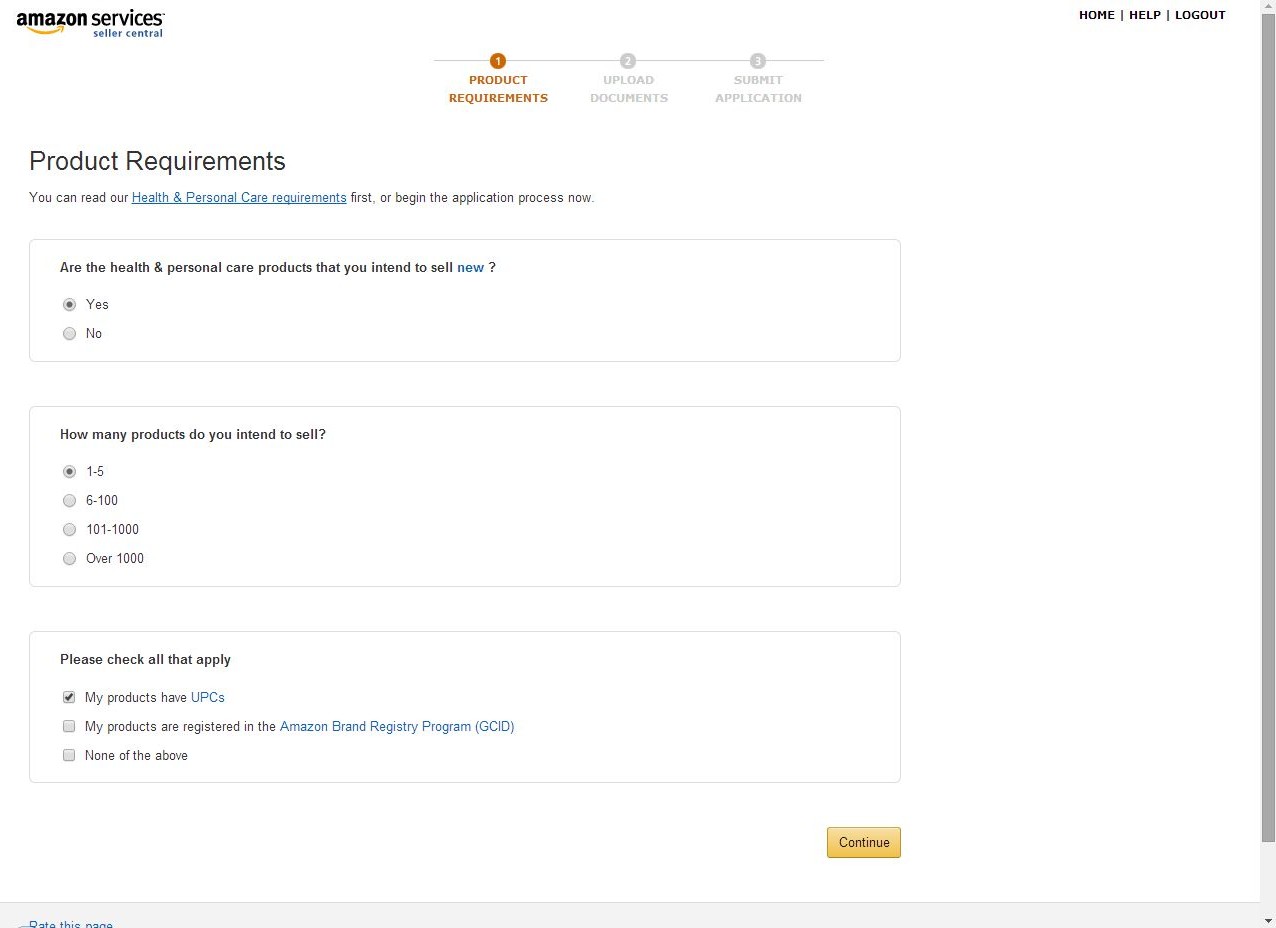
Obviously here, you’ll want to answer honestly, but, treat the selections as recommendations, other than the “how many products do you intend to sell” – I don’t know that there is a wrong answer there, but I haven’t tried the over 1000 option yet.
So far so good here, now you get to the harder parts, this is where Amazon wants to see evidence that you can procure products in the category, from reputable vendors. Here you’ve got plenty of choices, but, the answer to this test is option 1, providing 3 receipts.

Once you provide the receipts, you’ll get a confirmation e-mail from Amazon, and then you pretty much sit and wait. This is always the hardest part, because Amazon may come back and say “you didn’t provide a receipt with sufficient resellable quantities of products” for example… I’d normally ask what a sufficient quantity is, but, its kind’ve subjective. As far me, I think I did a dozen of an Olay moisturizer, a dozen of Blistex lip medex, and something from Kohls.
Wrapping Up
Ungating can really open up a lot more opportunities. The added benefit of ungating product categories is that there is a little bit of a barrier to entry, so competition may not be as fierce. Although there are some that it seems like barely a difference.
I also want to give a special thanks to PDXDealsGuy for help with the screenshots; once you ungate, you don’t get the same views.






So do you need to do this for each specific product or just the first time you sell in a category? Or once per product?
Once per product category… e.g. ungate coffee once and you can sell K-cups until your heart (or bottom line) is content
Awesome, I didn’t know that. This might be very useful.
Hi Trevor– I got declined in health and personal care after submitting receipts from Walmart. (For 9, 7, and 5 units of a single product). The email response Amazon sent wasn’t very helpful. Where did I go wrong? Not enough variety in products? Issue with retail receipt vs “packing slip” or “invoice”? They sure aren’t very transparent. Any advice would be helpful.
Hi Jill – so it can vary. Were these receipts from purchasing in store, or online? Because sometimes they can be picky. I also try to have at least two stores that I show receipts from, as they want to see proof that you can consistently get product from reliable sources. I’d definitely give it another try.
Well, here is the latest from Amazon on applying for Health and beauty. GRRRRR!!
Amazon
Dec 29, 2015 06:29 PM
Greetings from Amazon Seller Support,
I have reviewed your email and would like to inform you that as of now we are not providing an approval on retail receipts. We accept invoices, purchase orders, sales invoices, or commercial invoices.So, Please submit the required documentation from the following options
@Linda, I’ve been hearing that it is harder and harder to get ungated for health and beauty. Some services that used to get people ungated (for like $100-200) are even shying away. It could just be the time of the year, or it could be a larger move by Amazon to make it harder for retail arbitrage sellers to get into other categories. I think its too soon to tell. I am sorry to hear about your experience though.
Pingback: Considerations for Reselling as a Method for Manufactured Spending – Tagging Miles
So are any of these forbidden/restricted categories automatically ungated with the ‘professional’ plan or do you need to go through this same ungating process for the restricted categories regardless of whether you’re an ‘individual’ or ‘professional’ seller?
Pingback: Episode 24 – Reselling Part 2 with Oren’s Money Saver | Saverocity Observation Deck
Is it ok to resell an item you purchased on Amazon and resell that item on Amazon – or can Amazon shut down your Pro merchant account for doing so. I only see that you cannot use Prime to purchase an item for resale but what if you don’t use Prime to buy? Any thoughts?
Pingback: Reselling, the next frontier for Manufactured Spending - Tagging Miles